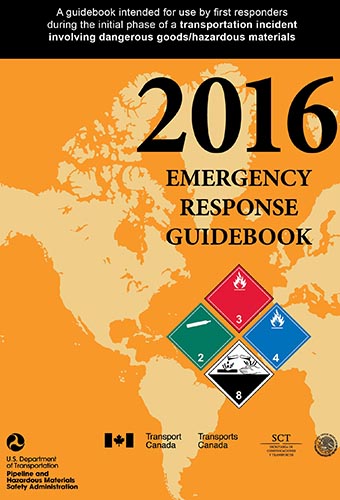CAMEO Chemicals 2.6 Now Contains 2016 Emergency Response Guidebook Data
MAY 6, 2016--Earlier this week, a new version of CAMEO Chemicals was released. With this program, you can learn about critical response information for thousands of chemicals in the database, and you can also use the reactivity tool to find out what hazards (such as explosions or corrosive byproducts) might occur when two substances mix together.
One of the key changes in this version of CAMEO Chemicals was an update to the 2016 Emergency Response Guidebook (ERG) data. The ERG is revised every four years as a collaborative effort by the U.S. Department of Transportation, Transport Canada, and Mexico's Secretariat of Transport and Communications. It is used extensively by first responders in the United States, and the ERG developers describe it as the "go-to manual to help respond to hazardous materials transportation accidents during the critical first minutes". The 2016 ERG has updated response guides (including new guides for adsorbed gases), revised initial isolation and protective action distances, and many other general enhancements.
Data updates from several other sources are also included in CAMEO Chemicals 2.6:
- Public exposure guideline levels for toxic chemical releases
- Suit fabric breakthrough times from DuPont
- Placards and shipping information from the Hazardous Materials Table from 49 CFR 172.101
- Hazard labels from the Department of Transportation
CAMEO Chemicals is currently available as a website, mobile website, and a desktop program. An app version for mobile phones and tablets is under development.
CAMEO Chemicals is part of the CAMEO® software suite, which is developed jointly by NOAA and the U.S. Environmental Protection Agency. The CAMEO suite provides tools to assist responders during chemical emergencies, and to help emergency planners prepare for them ahead of time.
For further information, contact Mark.W.Miller@noaa.gov or Brianne.Connolly@noaa.gov.
Go back to OR&R Weekly Report.

